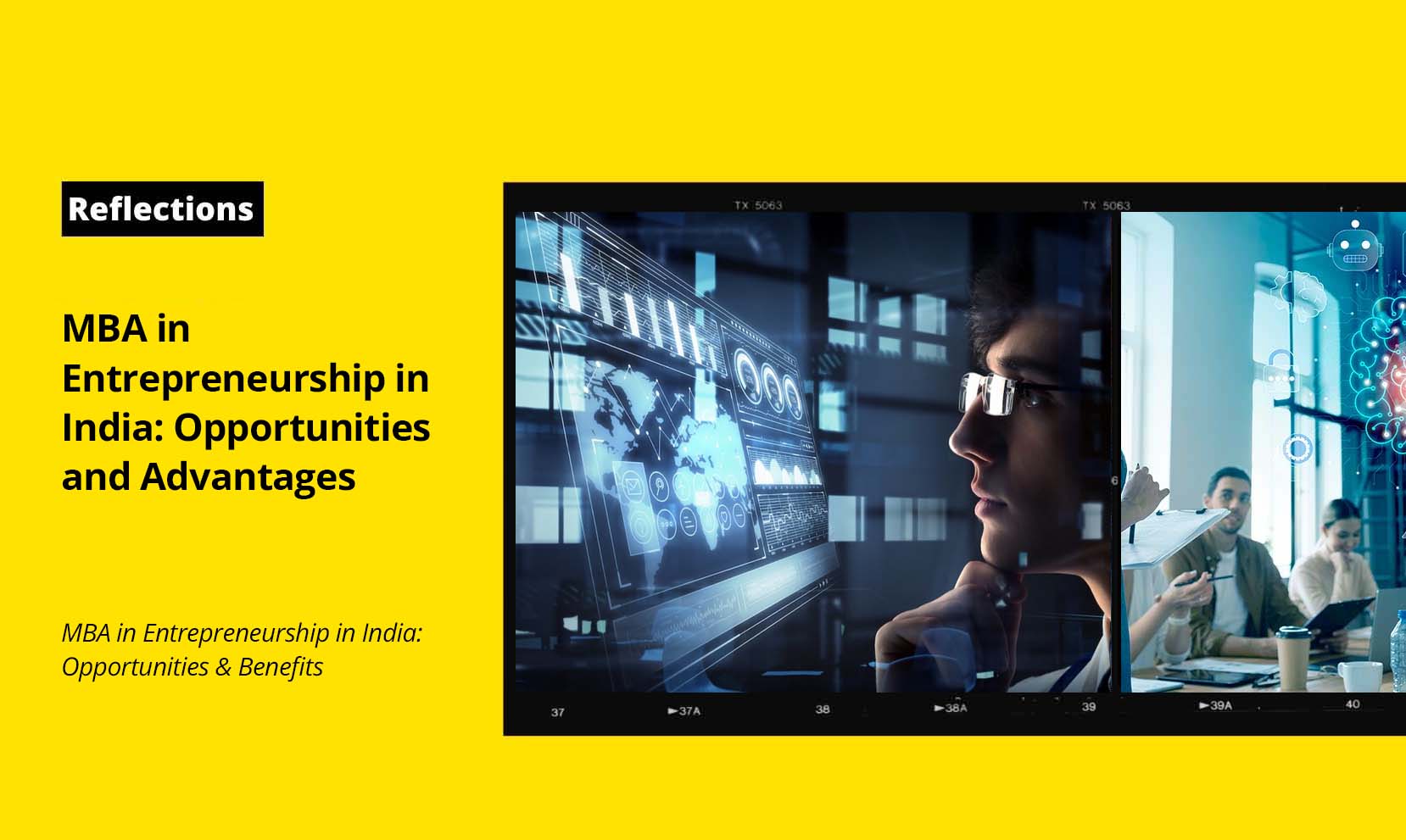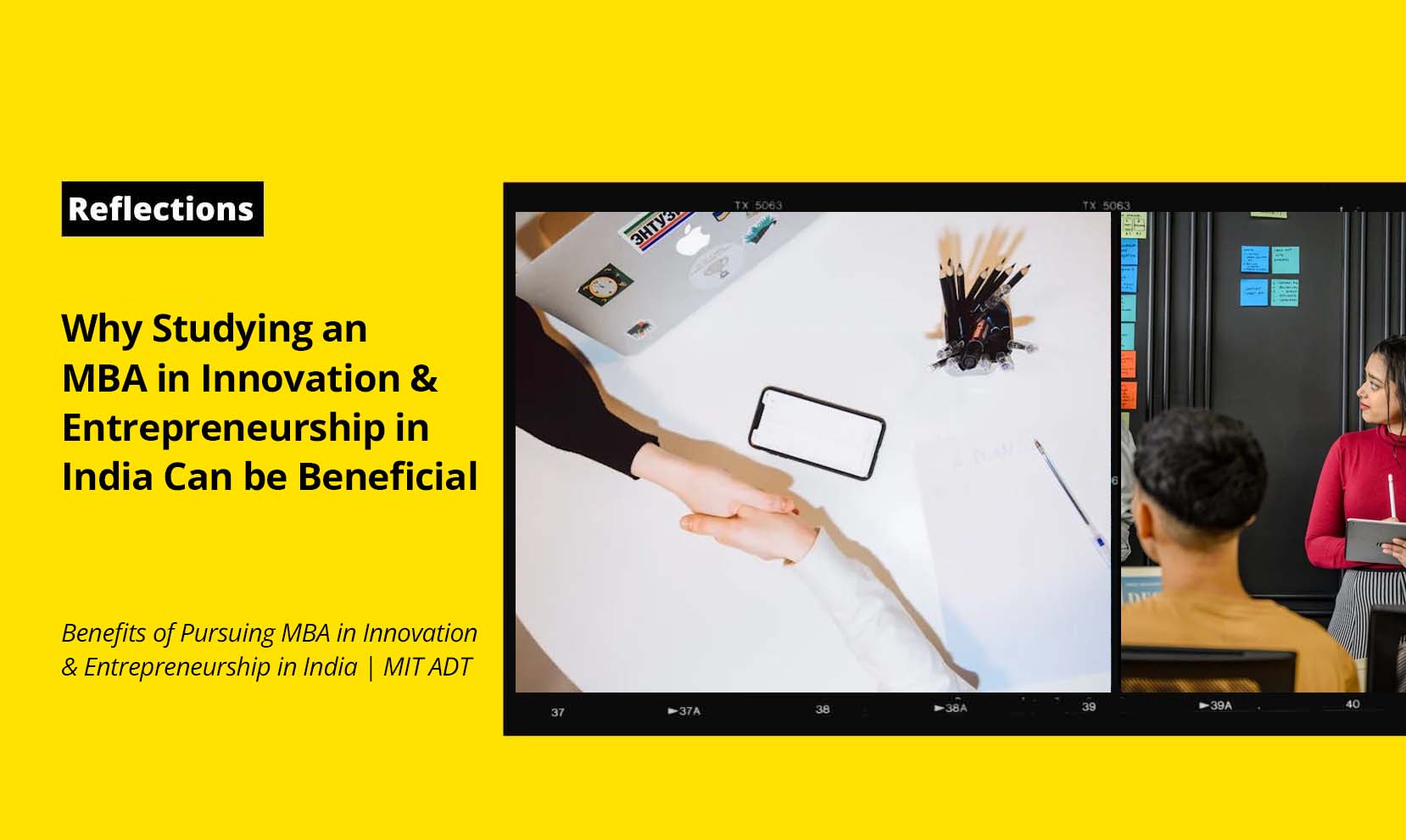MBA in Innovation Management | Fees & Admission Details
Are you looking for a unique Masters in Business Administration program that can help you stand out in a competitive job market? Look no further than an MBA in Innovation Management. This program focuses on developing the skills and knowledge needed to create, manage and sustain innovation within organizations.
In this blog, we will cover everything you need to know about the MBA in Innovation Management program – from its core curriculum and admission process to the fee structure and career prospects after graduation. We will also highlight why MIT ID Innovation is the perfect place to pursue your Innovation Management degree. So, let’s get started on your journey to becoming an innovation leader!
Understanding MBA in Innovation Management
With an MBA in Innovation Management, you will delve into the world of commerce and gain a deep understanding of how to drive success in today’s rapidly evolving business landscape. MBA students will have access to cutting-edge information technology tools and resources that support the management of innovation. Through coursework and projects, you will learn how to create successful products and bring new solutions to market. The program emphasizes strategic thinking and equips you with the skills necessary to be a skilled leader in ideation, prototype testing, and product management. By completing an MBA in Innovation Management, you will emerge as a competent professional who can drive transformation and effectively implement business plans. This specialized degree also opens doors to exciting career opportunities, both in your home country and abroad, including the United Kingdom, where innovative thinking and problem-solving are highly valued.
Admission Process for MBA in Innovation Management
To pursue an MBA in Innovation Management, the first step is to research and identify top business schools that offer this program. Once you have selected your preferred schools, it’s time to prepare and submit a comprehensive application package. This package typically includes your academic transcripts, letters of recommendation, and a statement of purpose.
In addition, many business schools require applicants to complete entrance exams such as the GMAT or GRE. These exams measure your aptitude for business studies and serve as an important factor in the admissions process.
After submitting your application, you may be invited to participate in interviews with the admissions committees of the chosen schools. These interviews allow the committees to assess your fit for their program and give you the opportunity to showcase your skills and passion for innovation management.
Once you have completed these steps, all that’s left is to await notification of acceptance or rejection from the business schools. It’s important to stay patient during this waiting period, as admission decisions can take some time.
In conclusion, the admission process for an MBA in Innovation Management involves thorough research, careful preparation of application materials, completion of entrance exams, participation in interviews, and finally, awaiting the decision from the chosen schools. Following these steps will increase your chances of securing a spot in a reputable MBA program that will pave the way for a successful career in the field of innovation management.
What is the Fee Structure for an MBA in Innovation Management?
The fee structure for an MBA in Innovation Management varies among business schools, with tuition fees ranging from thousands to lakhs per semester. Additional expenses, such as textbooks and living costs, should also be considered. Scholarships and financial aid options may be available. It is important to evaluate the return on investment in terms of future career prospects.
What are the Career Prospects after an MBA in Innovation Management?
Graduates with an MBA in Innovation Management have diverse career options. They can work as innovation managers or consultants in various industries, including research and development departments. Some may choose entrepreneurial paths by starting their own startups. The skills acquired make them valuable to industry leaders.
Why should you choose an MBA in Innovation Management from MIT ID Innovation?
Discover the advantages of pursuing an Innovation Management degree from MIT ID Innovation. This program offers a unique blend of business and innovation education, focusing on developing skills like creativity, critical thinking, and problem-solving. Benefit from experienced faculty and join successful graduates in top companies and startups across various industries.
Conclusion
In conclusion, pursuing an MBA in Innovation Management can open up a world of opportunities for you in the field of business and innovation. With a strong focus on developing your strategic thinking, leadership skills, and ability to drive innovation, this program equips you with the knowledge and tools to excel in the ever-evolving business landscape. The admission process is rigorous but worth the effort, as it ensures that only the most qualified candidates are selected. As for the fee structure, it is important to consider the return on investment that this degree can provide in terms of career advancement and earning potential. If you are looking for a reputable institution that offers this program, MIT ID Innovation stands out for its commitment to excellence and industry relevance. Start your journey towards a successful career in innovation management today!
An MBA in Innovation Management helps students become imaginative and skilled leaders who can think strategically and develop ways to come up with new ideas, build prototypes, and perform innovations. Usually, they need three to five years of work experience, though this may change in some cases.
Getting an MBA or a PGDM in innovation and entrepreneurship can teach you how to grow your own business while also making it bigger. These programs are not just about learning in a classroom; they often team up with incubators and accelerators to link aspiring entrepreneurs with investors, experts in the industry, and mentors.
In many business programs, students learn about innovation, which is a vital part of business studies. These programs include classroom teaching, hands-on workshops, and mentors, plus they have support like incubators and accelerators to help shape the entrepreneurs of the future.
While all MBAs cover high-level business skills, if you specialize in innovation management, you’ll learn how to make effective products and encourage innovation in a company or brand.




